Braces in Bali
Search and Compare the Best Clinics and Doctors at the Lowest Prices for Braces in Bali
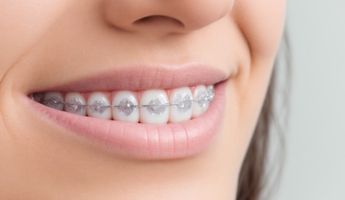
Find the best clinics for Braces in Bali
With Medijump you can browse 9 facilities offering Braces procedures in Bali. The cheapest price available is $416 in Jakarta, Banten
Braces in Indonesia
Price: $ 416
Braces in Jakarta
Price: $ 416
Braces in Bali
Price: $ 512
Vietnam offers the best prices Worldwide
Price: $ 1
From 35 verified reviews
PT IndoVest Development, 05 August 2020
Covid Rapid Test. Result in 15min. including certificate. RP. 380.000.--- Thank you so much....
From 2 verified reviews
Jacqui van Niekerk, 08 January 2020
Dr Andhika, Dr Joshua and the team have done such an exceptional and amazing job. They are truly experts in their field and by far the very best and most professional dental centre. We highly recommend these lovely people.
From 2 verified reviews
Asep Ilyas, 26 March 2018
I had treatment when I was in Bali .Very professional and kind service, from reception to the dentist and the Hygienist. I would highly recommend. I'm absolutely fine with everything. All round great practice, very knowledgeable and friendly.
From 27 verified reviews
michael hardie, 02 April 2020
Fantastic friendly staff. Never experienced the normal anxiety that I feel when visiting dentist. Plus no pain at all.5 stars
From 108 verified reviews
Cody Macquarie, 22 September 2020
From admitted to discharge was great. Front office staff, nurses, doctors all had wonderful and caring attitudes. Facility is beautiful and clean, I had nothing to complaint about
From 46 verified reviews
sella marsilia, 15 September 2020
Tempatnya bersih, dokternya baik hati dan penyayang, alat2nya lengkap, dari semua dokter yg saya datangi, baru kali ini gigi saya ditangani dgn sgt baik. Krn saya punya masalah gigi yg susah ditangani selama ini. Recomen banget pokoknya! Dan yg terpenting dari semua penanganan yang sangat memuaskan ini..harganya masuk akal!
From 53 verified reviews
Muhammad Reza Ichsan, 02 September 2020
One of the best clinic in Kuta. Offered dental and aesthetic services
Bali Dental & Implant Centre, located in Gianyar, Bali, Indonesia offers patients Braces procedures among its total of 48 available procedures, across 2 different specialties. The cost of a Braces procedure starts from Rp10,000,000, whilst the national average price is approximately Rp7,540. There is currently a lack of information available on the specialists practicing at the Dental, and they are not accredited by any recognized accreditations institutes
Bright Smiles Bali Dental Centre, located in Denpasar, Bali, Indonesia offers patients Braces procedures among its total of 46 available procedures, across 2 different specialties. The cost of a Braces procedure starts from Rp9,000,000, whilst the national average price is approximately Rp7,540. There is currently a lack of information available on the specialists practicing at the Dental, and they are not accredited by any recognized accreditations institutes
Compare Before & After Photos of _procedure_photos.phpBraces
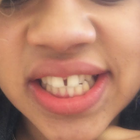
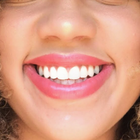
Front view
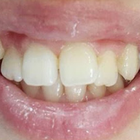
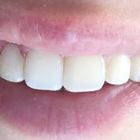
Front view
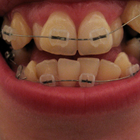
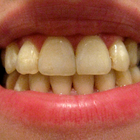
Front view
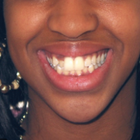
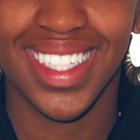
Front view
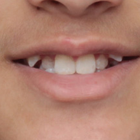
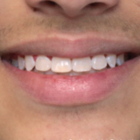
Front view
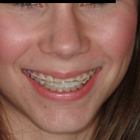
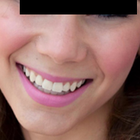
Front view
WHY US?
At Medijump, we're making medical easy. You can search, compare, discuss, and book your medical all in one place. We open the door to the best medical providers worldwide, saving you time and energy along the way, and it's all for FREE, no hidden fees, and no price markups guaranteed. So what are you waiting for?

Free

Best Price

Widest Selection

Risk-Free
What do you need to know about Braces in Bali?

The Braces, commonly referred to as braces, is a mainstream dental technique designed to correct and align a person's dentition. Beneficial for both aesthetic and health reasons, the process involves repositioning misaligned teeth to improve your oral health and overall appearance. Aesthetic benefits aside, the Braces in Bali also assists in enhancing oral hygiene, reducing discomfort when chewing, and even helping in speech correction in certain scenarios.
A thorough understanding of the Braces requires patient awareness regarding the longevity and complexity of the procedure. The dentist assesses the oral condition of an individual and plans a custom treatment accordingly. The treatment is usually achieved through subsequent periodic modifications that help guide teeth to their correct position over time. Your dentist unwaveringly monitors the Braces process, ensuring progress, and addressing any potential complications promptly.
There are several types of braces, including:
- Metal braces –are the traditional braces that come to mind for most people. Metal braces are made of metal brackets and an archwire is used to put pressure on your teeth and jawline, and O-rings are used to connect the brackets and the archwire.
- Ceramic braces – these are the same shape and size of metal braces. However, they are tooth-colored or clear, so they blend in with your teeth.
- Lingual braces – this type of braces are essentially the same as traditional metal braces, except that the wires and brackets are placed on the inside of your teeth.
- Clear aligners – mostly known as Invisalign (the most popular brand of clear aligners), these are removable, clear braces. This type of braces is best for people who only need minor corrections.
Braces are usually used during adolescence. However, more and more people are getting them later on in life.
What is the cost of Braces in Bali?
The cost of Braces or braces in Bali can vary based on a range of factors. These can include the specific type of braces chosen, the severity of the case, the expected duration of the treatment, and the dentist's experience and expertise. The costs can also be influenced by the geographical location. For example, the pricing for this dental intervention could be influenced by the local cost of living and local healthcare standards.
Apart from these specifics, your insurance coverage can also impact the final cost of the treatment. It's vital to verify with your insurance provider if orthodontic treatments like the Braces are covered in your plan and to what extent. Some plans cover only a portion of the treatment, while others may cover more. Speaking with your dentist about costs and payment plans is recommended for a smooth, transparent, and stress-free treatment experience
What does a Braces Procedure Involve?
The Braces involves multiple stages which start with an initial consultation at an accredited clinic to assess the dental needs and the approaches applicable to the case. The first step typically involves a meticulous examination, including an X-ray of your dentition to gain a complete understanding of your oral structure.
Subsequent to the initial consultation, the dentist crafts a specialized plan that outlines the sequence for the Braces. Once the plan is finalized and consented by the patient, implementation begins. The chosen type of braces are put on, which is a process that can last for a few hours. Post-installation, periodic adjustments at regular intervals are crucial to guide the teeth to the desired position gradually.
How Long Should I Stay in Bali for a Braces?
As the Braces involves separate steps over an extended period, individual visits to your dentist or orthodontist are usually brief. Most patients can expect their initial fitting to take around one to two hours, with follow-up adjustment visits usually taking around 15 to 30 minutes.
While the procedure does not require any hospital stay and has minimal impact on your daily activities, it's crucial to note that a full Braces or braces treatment can often last between 18 to 24 months. Therefore, any decision to relocate during the treatment period should be carefully considered.
What's the Recovery Time for Braces in Bali?
The concept of 'recovery time' for the Braces differs from other medical procedures. After your braces have been fitted or adjusted, you may experience general discomfort or difficulty in eating solid food. Usually, this discomfort subsides in about a week.
Contrarily, the overall process of correcting dental alignment using braces isn't quick. Depending on factors such as age, dental condition, and the extent of alignment required, the entire process may last anywhere from 1 to 3 years. As progress varies from case to case, it's best to discuss this with your healthcare provider to understand the timeline for your unique situation.
What's the Success Rate of Braces in Bali?
The Braces enjoys a remarkable success rate. With high patient satisfaction levels reported worldwide, the process has helped many to achieve a desirable and healthier smile. The success of a Braces differs from case to case and depends on the patient's dental condition, age, and the type of braces used.
Another crucial factor that significantly influences the success of the Braces is patient compliance. Adherence to the guidelines provided by the orthodontist, including diligent oral hygiene, attending follow-up appointments, and ensuring regular adjustments are a few ways to optimize treatment outcomes and experience long-term success.
Are there Alternatives to *Treatment Procedure* in Bali?
Yes, there available alternatives to the Braces in Bali. Invisalign, for instance, is a modern orthodontic treatment that, unlike traditional metal braces, uses clear, removable aligners custom-fitted to your teeth. This alternative has grown popular due to its near-invisible appearance, making the treatment less noticeable.
Another alternative is the lingual braces; these are essentially similar to traditional braces but are placed on the inward-facing side of your teeth, making them less visible when you speak or smile. Dental surgery is a more drastic option, usually considered only in extreme cases when orthodontic treatments alone may not be sufficient.
It's important to discuss these alternatives with your dentist and consider all aspects such as costs, duration, maintenance, and visual appearance before deciding on the most suitable option for you.
What Should You Expect Before and After the Braces?
WebMD, could be a few years or indefinitely. Many patients have reported heightened self-confidence and improved oral health, making the Braces a worthy investment, which has made a mark in the field of Health and wellness.
What are some potential complications of the Braces in Bali?
While the Braces is generally safe, like any dental procedure, there can be potential complications such as discomfort after adjustment, difficulty in brushing, loss of calcium from the teeth (tooth decalcification), and shortening of tooth roots. Rarely, patients may also experience allergic reactions to some of the metals used in braces.
Difficulty brushing could potentially lead to an accumulation of plaque, leading to gum disease if not adequately managed. As such, engaging in regular oral hygiene practices is of utmost importance. If you notice any of these issues, it is crucial to raise them with your dentist as soon as possible
What is the Importance of Aftercare for Braces?
Aftercare plays a crucial role in the success and longevity of the results of the Braces. Once the braces are removed, you're generally required to wear a retainer, which your dentist will custom-fit for you. A retainer helps in maintaining and stabilizing your teeth in their new position. Neglecting to wear the retainer can lead to your teeth shifting back to their original position, reducing the efficiency of the treatment.
In addition to using a retainer, maintaining good oral hygiene throughout the course of wearing braces and even afterward is necessary. Oral care routines such as brushing your teeth twice a day, flossing regularly, and having routine dental checkups will help ensure the health of your teeth and gums long after the Braces.
A well-nourished diet that limits sugary and starchy foods is recommended to further protect your oral health.
What are the Differences Between Adult and Children's Braces?
When comparing adult and children's braces, the primary distinction is rooted in the biological differences between kids and adults. As children’s jaws are still growing, it may be easier to influence the position and alignment of teeth, making children more responsive to the Braces.
However, with adults, the Braces might take longer as their jaws are already fully developed, and shifting teeth can be more complex. So, while braces are effective at any age, the duration of treatment may differ between adults and children.
Even though the Braces will differ among age groups, the critical point remains that adults, just like children, can still benefit from braces in terms of improved oral health, better dental function and enhanced self confidence, as mentioned by Mayo Clinic.
What are the Different Types of Braces?

There are several types of braces or Braces options available to cater to an array of needs and preferences. Traditional braces are the most popular, consisting of metal brackets that are glued to your teeth and linked with wires. They're now lighter and more flexible, reducing discomfort than previous versions.
Ceramic braces are similar to traditional ones, but they use tooth-colored or clear brackets to merge more naturally with your teeth. Lingual braces are metal braces placed on the inside of your teeth making them less noticeable. Lastly, Invisalign braces are clear, custom-fit removable aligners that are almost invisible, making them very popular among adults and teens who prioritize aesthetics.
It's important to remember that each type of Braces has its pros and cons: while some might be more aesthetically pleasing, others could be more efficient in treating complicated cases. Consulting with your dentist will allow you to make an informed decision based on your unique case.
What Kind of Maintenance Does Braces Require?
Maintenance during the Braces involves maintaining a high level of oral hygiene. Because braces can lodge food particles, frequent and thorough brushing is necessary to prevent plaque build-up leading to tooth decay or gum disease. The use of special brushes and floss can help get to those hard-to-reach places around brackets and wires.
Additionally, periodic appointments with your orthodontist are obligatory to keep track of progression and make necessary adjustments. Furthermore, certain types of food are to be avoided as they can break wires or brackets. These typically include hard or sticky foods like candy, popcorn, and nuts. Your dentist will provide specific guidelines customized to your Braces.
Whilst the information presented here has been accurately sourced and verified by a medical professional for its accuracy, it is still advised to consult with your doctor before pursuing a medical treatment at one of the listed medical providers
No Time?
Tell us what you're looking for and we'll reachout to the top clinics all at once
Enquire Now

Popular Procedures in Bali
Prices Start From $1

Prices Start From $1

Prices Start From $48

Prices Start From $1

Prices Start From $1

Prices Start From $1

Prices Start From $11

Prices Start From $1

Prices Start From $45

Recommended Medical Centers in Bali for Braces

- Interpreter services
- Translation service
- Religious facilities
- Medical records transfer
- Medical travel insurance
- Health insurance coordination
- TV in the room
- Safe in the room
- Phone in the room
- Private rooms for patients available

- Interpreter services
- Translation service
- Religious facilities
- Medical records transfer
- Medical travel insurance
- Health insurance coordination
- TV in the room
- Safe in the room
- Phone in the room
- Private rooms for patients available

- Interpreter services
- Translation service
- Religious facilities
- Medical records transfer
- Medical travel insurance
- Health insurance coordination
- TV in the room
- Safe in the room
- Phone in the room
- Private rooms for patients available

- Interpreter services
- Translation service
- Religious facilities
- Medical records transfer
- Medical travel insurance
- Health insurance coordination
- TV in the room
- Safe in the room
- Phone in the room
- Private rooms for patients available

- Interpreter services
- Translation service
- Religious facilities
- Medical records transfer
- Medical travel insurance
- Health insurance coordination
- TV in the room
- Safe in the room
- Phone in the room
- Private rooms for patients available

- Interpreter services
- Translation service
- Religious facilities
- Medical records transfer
- Medical travel insurance
- Health insurance coordination
- TV in the room
- Safe in the room
- Phone in the room
- Private rooms for patients available

- Interpreter services
- Translation service
- Religious facilities
- Medical records transfer
- Medical travel insurance
- Health insurance coordination
- TV in the room
- Safe in the room
- Phone in the room
- Private rooms for patients available

- Interpreter services
- Translation service
- Religious facilities
- Medical records transfer
- Medical travel insurance
- Health insurance coordination
- TV in the room
- Safe in the room
- Phone in the room
- Private rooms for patients available

- Interpreter services
- Translation service
- Religious facilities
- Medical records transfer
- Medical travel insurance
- Health insurance coordination
- TV in the room
- Safe in the room
- Phone in the room
- Private rooms for patients available

- Interpreter services
- Translation service
- Religious facilities
- Medical records transfer
- Medical travel insurance
- Health insurance coordination
- TV in the room
- Safe in the room
- Phone in the room
- Private rooms for patients available
Braces in and around Bali
About Bali
Bali is an Indonesian province located on the west side of the Lesser Sunda Islands. It is the country’s main tourist hotspot that attracts millions of tourists each year. The beaches are tranquil and perfect for any sun-seeker, the marine life is one of the most diverse in the world, the culture is beautiful, and the mountains are covered in lush jungles and great for hiking. In addition to the natural and cultural beauty, there are myriad of things that tourists can do here, from yoga, partying, surfing, to horseback riding.
Bali is not only full of fascinating beaches, but this tropical paradise also boasts many high-quality medical facilities offering various types of treatments. The island continues to upgrade its infrastructure and develop its medical centers to compete with neighboring countries, such as Singapore and Thailand. Medical tourists are able to avail of a wide range of treatments including cosmetic surgery and at affordable rates. The medical centers have modern equipment, and there is little to no waiting time for almost every procedure. Additionally, the island is also equipped with exclusive yoga centers, Bali-traditional spas, and Jamu traditional medicinal herbs.
Popular Areas in Bali
- Seminyak is known to be the most luxurious area in Bali. Tourists will find many fashionable boutiques, upscale restaurants, and exclusive clubs. In the afternoon, tourists can soak up the sun while sipping a cocktail in one of its famous beach clubs or take a beginner surfing lesson at one of its beaches. The main beach is Petitenget Beach where tourists can enjoy magical sunsets or swim in its warm waters. The area is also home to Bali’s best cafés, which makes café hopping a must-do event.
- The Nusa Islands is located around 20 kilometers offshore from the main island and can only be accessed by boat. It consists of three islands: Lembongan, Ceningan, and Penida. The most popular and the closest to the main island of Bali is Nusa Lembongan. The biggest is Nusa Penida and the smallest is Nusa Ceningan. The three islands offer tranquil and almost-empty beaches, which is perfect for anyone who wishes to stay away from crowds.
- Ubud is the island’s jungle paradise that still retains numerous aspects of traditional Balinese. It is the place for tourists who wants to immerse in Bali’s culture and nature. There are various beautiful temples, dance shows, and historical sites within the area. The most popular place is Ubud Monkey Forest or the Sacred Monkey Forest Sanctuary, which is a sacred temple, an evocative jungle, and natural habitat of monkeys.
- Sanur is Bali’s earliest beach resort and is located on the eastern side of the island; it contains some of the island’s first hotels. The area is known to be family-friendly as well as one of the best places to enjoy Bali’s magnificent sunrises. Sanur is very quiet which makes it the perfect place for relaxation. Wander around for a day and you will find many major cultural landmarks hidden in plain sight.
- Canggu is famous for its green rice fields, dark sandy beaches, and healthy food. This up-and-coming area is also filled with cool cafes and vegan restaurants. It is also a prime spot for surfing since the beaches have massive shore breaks. One of the most famous places in the area is the Pura Tanah Lot Temple as it is a famous seaside religious site located on top of a rock formation, which offers a picturesque view.
Weather and Climate in Bali
Bali enjoys warm and comfortable weather all year round. The tropical island experiences two seasons: dry and wet. The dry season starts in April and ends in October. The average temperatures during this season are between 23 °C to 31 °C. June to August are the driest months, making them the best months to visit the island. The wet season is from November to March. Expect to find many rainy days during the wet season. The temperatures are generally similar to the dry season, but the humidity will increase significantly.
Getting Around in Bali
I Gusti Ngurah Rai International Airport is the main gateway to Bali and it is located 13 kilometers south of Denpasar and is the second busiest airport in Indonesia. The airport has international connections with major cities around the globe, including Bangkok, Melbourne, Moscow, and Guangzhou. It also serves domestic flights to many regions within Indonesia. The most affordable way to travel to and from Bali is by flying with budget airlines, such as AirAsia, Citilink, and Lion Air.
There are several ways to get around Bali. Most of the transportation options are very affordable. Hiring a motorcycle is the fastest option, but if you do not like the idea of driving by yourself, you can try the motorcycle taxis known as ‘ojek,’ which can be hailed directly from the streets or by using apps such as Grab and Go-Jek (similar to Uber). The apps also provide private cars and food delivery. Taxis are widely available and run on a meter. The most reliable taxi companies are Blue Bird and Express.
Tourist Visas in Bali
Indonesia is known to be a visa-friendly country since most developed countries can enter without a visa. The country allows a citizen of 170 countries to enter and stay for up to 30 days. Citizens of Japan, the United Kingdom, the United States, and 65 other countries can apply for a visa on arrival. It is best to check at the nearest Indonesia Embassy or Consulate to find out if you need a visa or not. All visitors are required to have a visa valid for at least 6 months.
Additional Information
- Local Currency: Indonesian Rupiah (Rp) is the official currency, and $1 converts to Rp14.000.
- Money & Payments: Tourists will find ATMs that accept international cards almost everywhere (mostly Visa and MasterCard). Credit and debit cards are accepted in many shops, restaurants, and hotels. Tipping is not expected but will be greatly appreciated.
- Local Language: The official language is Bahasa Indonesia, and most people will also speak Balinese. English is widely spoken, especially in tourist areas.
- Local Culture and Religion: Most people in Bali follows Hinduism, and almost every aspect on the island is submerged with the Hindu faith. There is also a large group of Muslims as well as small group groups of Christian and Buddhists.
- Public Holidays: Bali celebrates major religious holidays, including Nyepi (Silent Day), Eid Mubarak, Christmas, and Vesak.
Popular Searches
- Plastic Surgery in Thailand
- Dental Implants in Thailand
- Hair Transplant in Thailand
- Breast Augmentation Thailand
- Gastric Sleeve in Thailand
- Gender Reassignment Surgery in Thailand
- Laser Hair Removal in Bangkok
- Botox in Bangkok
- Dermatology in Bangkok
- Breast Augmentation in Bangkok
- Coolsculpting in Bangkok
- Veneers in Turkey
- Hair Transplant in Turkey
- Rhinoplasty in Turkey
- Stem Cell Therapy in Mexico
- Rhinoplasty in Mexico
- Liposuction in Mexico
- Coolsculpting in Tijuana
- Rhinoplasty in Korea
- Scar Removal in Korea
- Gastric Sleeve in Turkey
- Bone Marrow Transplant in India
- Invisalign in Malaysia
- Plastic Surgery in the Dominican Republic
- Tummy Tuck in the Dominican Republic
- Plastic and Cosmetic Surgery in Poland
- Rhinoplasty in Poland
- Hair Implant in Poland
- Dental Implants in Poland
- IVF in Turkey








